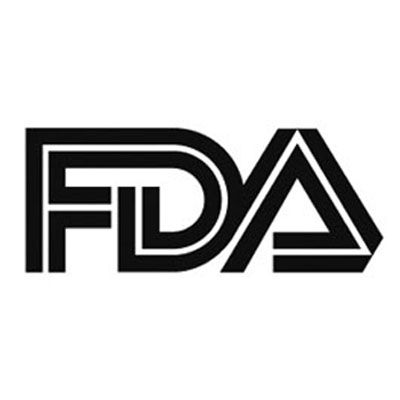FDA ODAC Votes in Favor of Belantamab Mafodotin Approval for Relapsed or Refractory Myeloma
“We are pleased the committee recognised the potential for belantamab mafodotin to help patients who have relapsed or refractory multiple myeloma, an incurable disease with limited treatment options."

The FDA’s Oncologic Drugs Advisory Committee (ODAC) unanimously voted in favor of the benefit observed with belantamab mafodotin (GSK2857916), an investigational immunoconjugate targeting BCMA, outweighed the risks as treatment of patients with relapsed/refractory multiple myeloma who previously received therapy with an immunomodulatory agent, a proteasome inhibitor, and an anti-CD38 antibody, according to a press release.
Should this agent receive approval from the FDA, it will be the first anti-BCMA treatment available in this patient population. The ODAC made this recommendation based on data from the phase 2 DREAMM-2 study,which was presented as part of the 2020 American Society of Clinical Oncology Virtual Scientific Program. The agent previously received a Priority Review Designation from the FDA in January 2020 based on earlier findings from this study that were published in December 2019.
“We are pleased the committee recognised the potential for belantamab mafodotin to help patients who have relapsed or refractory multiple myeloma, an incurable disease with limited treatment options," stated Axel Hoos, MD, PhD, senior vice president and head of Oncology R&D, GSK. "We look forward to working with the FDA as they complete their review of our Biologics License Application.”
The FDA will make the final decision regarding the approval of this agent, and the agency is not bound to follow the recommendation from the ODAC.
According to the 13-month follow-up data, the ORR was 32% in 31 of 97 patients in the 2.5-mg/kg cohort (97.5% CI, 21.7-43.6) and 35% in 35 of 99 patients in the 3.4-mg/kg cohort (97.5% CI, 23.9-46.0). A very good partial response (VGPR) was observed in 58% and 66% of the patients in the 2.5- and 3.4-mg/kg cohorts, respectively.
The duration of response had not yet been reached for either cohort, but the estimated median duration of response was 11.0 months for the 2.5-mg/kg cohort (95% CI< 4.2-not reached [NR]) and 6.2 months in the 3.4-mg/kg cohort (95% CI, 4.8-NR).
The median progression-free survival was 2.8 months with the 2.5-mg/kg dose (95% CI, 1.6-3.6) and 3.9 months with the 3.4-mg/kg dose (95% CI, 2.0-5.8). The median overall survival estimates were 14.9 months (95% CI, 9.9-NR) and 14.0 months (95% CI, 10.0-NR), respectively. The estimated 1-year survival was approximately 58% in both groups.
Adverse events (AEs) of any grade occurred in 98% and 100% of patients in the 2.5- and 3.4-mg/kg cohorts, with treatment-related AEs occurring in 88% and 95% of patients, respectively. Grade 3 or higher AEs were observed in 84% of all patients in the study, which included keratopathy in 46% of the 2.5-mg/kg cohort and 42% in the 3.4-mg/kg cohort, anemia in 21% and 27%, thrombocytopenia in 22% and 32%, lymphocyte count decreased in 13% and 7%, and neutropenia in 11% and 7%, respectively.
Investigators noted keratopathy was seen in 75% of patients in the lower-dose cohort and 77% in the higher-dose cohort. The median time to onset of this event was 37.0 days and 22.5 days in the lower- and higher-dose cohorts. Patients may experience symptoms such as dry eye, blurred vision, and changes in visual acuity. The median time to resolution of keratopathy from the first event was 86.5 days in the lower-dose cohort and 85.0 days in the higher-dose cohort.
According to the FDA, there is no data to suggest topical steroids could mitigate observed risks of ocular toxicity with this treatment.
"The only currently identified mitigation strategy is appropriate monitoring for ocular toxicity and implementation of dose modifications," the FDA noted in a briefing document for the meeting. "Although the DREAMM-2 protocol included recommendations for use of lubricant eye drops, patients still developed keratopathy and symptoms of dry eye."
Fifty-four percent of patients receiving the lower dose and 62% receiving the higher dose had a dose modification or reduction due to AEs, and 47 and 53% of patients, respectively, delayed treatment due to keratopathy. Keratopathy led to dose reductions in 25% of patients in the lower-dose group and 30% in the higher-dose group, and 3 patients in each cohort discontinued treatment to control corneal events, which suggests the dose modification adequately managed the toxicity.
The open-label 2-arm study enrolled patients with relapsed/refractory multiple myeloma who have received at least 3 prior lines of therapy and who were refractory to immunomodulatory drugs and proteasome inhibitors, and refractory and/or intolerant to an anti-CD38 monoclonal antibody. Patients were stratified by prior lines of therapy and cytogenetics; those who had a median of 7 prior lines received 2.5 mg/kg of the study drug, while those with 6 prior lines received 3.4 mg/kg per dose. The agent was given via intravenous infusion every 3 weeks on day 1 of each cycle until disease progression or unacceptable toxicities occurred.
All patients had an ECOG performance status ≤2. Among the patients in the 2.5 mg/kg group, 42% had high-risk cytogenetic features compared with 47% in the 3.4 mg/kg group, and these high-risk features included the t(4;14) and t(14;16) translocations.
References
- FDA panel votes in favor of approving GSK’s multiple myeloma drug. News Release. July 14, 2020. Accessed July 14, 2020. https://reut.rs/3fpoC0C
- Lonial S, Lee HC, Badros A, et al. Pivotal DREAMM-2 study: single-agent belantamab mafodotin (GSK2857916) in patients with relapsed/refractory multiple myeloma (RRMM) refractory to proteasome inhibitors (PIs), immunomodulatory agents, and refractory and/or intolerant to anti-CD38 monoclonal antibodies (mAbs). Data presented as part of 2020 American Society of Clinical Oncology Virtual Scientific Program; May 29-31, 2020. Abstract 8536.
Gasparetto Explains Rationale for Quadruplet Front Line in Transplant-Ineligible Myeloma
February 22nd 2025In a Community Case Forum in partnership with the North Carolina Oncology Association, Cristina Gasparetto, MD, discussed the CEPHEUS, IMROZ, and BENEFIT trials of treatment for transplant-ineligible newly diagnosed multiple myeloma.
Read More